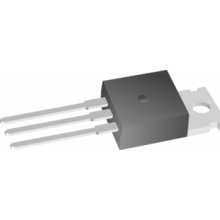What is a Voltage Regulator?

A Voltage Regulator is an integrated circuit that outputs a specified DC voltage. An example of this is a 5-volt regulator, such as the LM7805, which provides a consistent voltage of 5 volts. Voltage regulators are necessary in applications where a certain constant and consistent level of DC voltage is needed in a circuit. A circuit may need a consistent DC voltage of 3.3 volts. There are 3.3 voltage regulators. A circuit may need a consistent DC voltage of 9 volts. Then the circuit designer would use a 9-volt regulator to provide 9 volts consistently to a circuit. You probably get the point by now. A voltage regulator is used in applications in circuits where a specific, constant DC voltage output is needed.
Voltage regulators are widely used in variety of electronic circuits. This is because electronic components, especially microelectronic circuits, which contain components such as ICs, would fry if they were supplied with high voltage. They are voltage-sensitive devices and would be destroyed and rendered nonfunctional and useless with high voltage. These devices function only on low voltage, so they are used in conjunction with voltage regulators, which outputs low DC voltage.
To find out how a voltage regulator works and how to hook it up to a circuit,
click on
How to Connect a Voltage Regulator in a Circuit
Related Resources
What is a LM7805 Voltage Regulator?
What is an Adjustable Voltage Regulator?
How to Connect an Adjustable Voltage Regulator
How to Test a Voltage Regulator